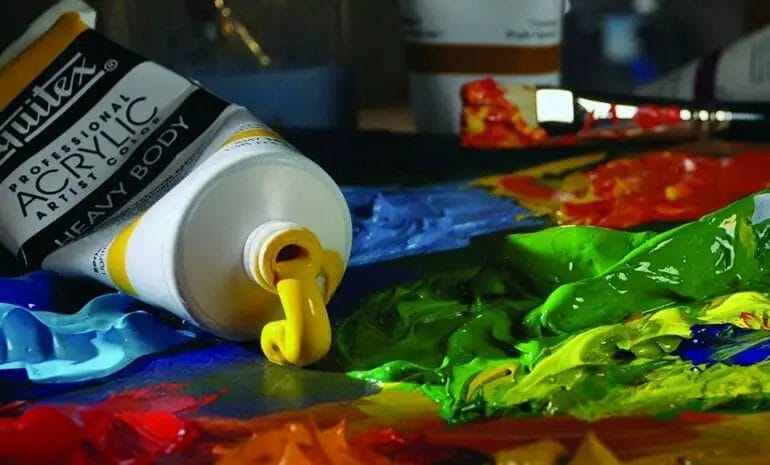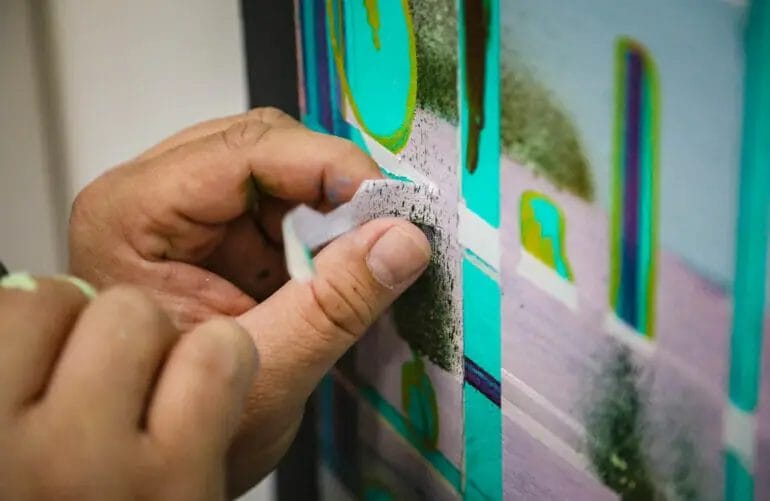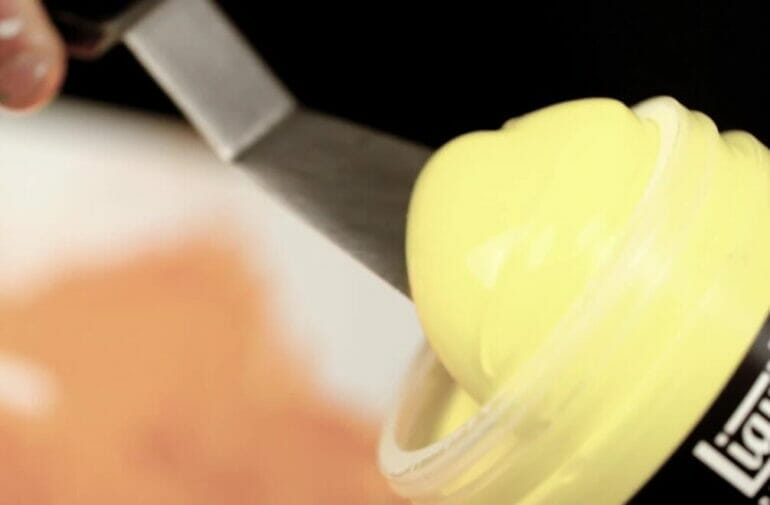Heavy body acrylic paint is a versatile and popular medium used by artists for various applications. Its thick consistency allows for easy application with brush or palette knife, making it ideal for creating textured and expressive artwork. Whether you’re a beginner or a professional, heavy body acrylic paint offers vibrant colors and excellent coverage, making it perfect for traditional canvas paintings, mixed media projects, and even street art.
With its ability to retain brush strokes and hold its shape, heavy body acrylic paint is often chosen by artists who prefer a more pronounced texture in their work. Its quick drying time allows for layering and blending techniques, giving artists greater control over their compositions. Additionally, heavy body acrylic paint is compatible with a wide range of surfaces, including canvas, wood, paper, and even metal.
One of the major advantages of heavy body acrylic paint is its versatility. Artists can dilute it with water for a more fluid consistency or mix it with other mediums to achieve different effects. Its high pigment load ensures vibrant and long-lasting colors, while its lightfastness properties protect artwork from fading over time. This makes heavy body acrylic paint suitable for both indoor and outdoor use.
Whether you’re a professional artist or just starting out on your creative journey, heavy body acrylic paint offers endless possibilities. Its thick texture, vibrant colors, and compatibility with various surfaces make it a popular choice for artists of all levels. So grab your favorite brushes and explore the world of heavy

Achieving Texture with Heavy Body Acrylic Paint
Heavy body acrylic paint is a versatile medium that allows artists to create beautiful textures in their artwork. Whether you are a beginner or an experienced painter, exploring different techniques with heavy body acrylic paint can add depth and interest to your work. In this section, we will discuss various methods and tips for achieving texture with heavy body acrylic paint.
1. Thick Application
One of the simplest ways to create texture with heavy body acrylic paint is by applying it thickly onto the canvas. Using a palette knife or a brush, load a generous amount of paint and apply it in thick, bold strokes. This will create visible brushstrokes and add dimension to your artwork. Experiment with different brush sizes and strokes to achieve the desired texture.
2. Impasto Technique
The impasto technique involves applying thick layers of paint directly onto the canvas without diluting it with water or any other medium. This technique creates a three-dimensional effect and gives the artwork a sculptural quality. You can use a palette knife or a brush to build up the paint in layers, adding texture and depth to your painting.
3. Mixing Texture Mediums
Texture mediums are specially formulated additives that can be mixed with heavy body acrylic paint to create texture. These mediums come in a variety of forms such as gels, pastes, and granules. By adding texture medium to your paint, you can achieve a wide range of effects, from subtle texture to more pronounced raised surfaces. Experiment with different types of texture mediums to find the ones that suit your artistic style.
4. Collage and Mixed Media
Another way to create texture with heavy body acrylic paint is by incorporating collage and mixed media elements into your artwork. Add torn pieces of paper, fabric, or other textured materials to your canvas before applying the paint. The paint will adhere differently to these textured surfaces, creating interesting and unique effects. Explore the combination of paint and other materials to achieve a multi-dimensional and tactile artwork.
5. Stippling and Dabbing
Stippling and dabbing techniques involve using a brush or a sponge to create small dots or dabs of paint on the canvas. This technique can be used to create various textures, such as the appearance of foliage in a landscape painting or the texture of a rough surface. Experiment with different brushes, sponges, and colors to create different textures and effects.
6. Dry Brushing
Dry brushing is a technique where you load a small amount of paint onto a dry brush and then lightly brush it over the canvas. This technique creates a rough, scratchy texture and can be used to add highlights or details to your artwork. By varying the pressure and direction of your brush strokes, you can achieve different textures and effects.
In summary, achieving texture with heavy body acrylic paint offers a wide range of creative possibilities for artists. Whether you choose to apply the paint thickly, use texture mediums, incorporate mixed media elements, or experiment with different techniques, the key is to have fun and explore the various ways you can add texture to your artwork. So grab your brushes and paints, and start creating textured masterpieces!

Creating Impasto Effects with Heavy Body Acrylic Paint
Impasto is a painting technique that involves applying paint in a thick, textured manner to create a three-dimensional effect on the canvas. It adds depth, dimension, and a tactile quality to your artwork. One of the best mediums to achieve this technique is heavy body acrylic paint.
Heavy body acrylic paint has a high viscosity, meaning it is thicker and retains its shape when applied to the canvas. This allows you to build up layers and create bold, pronounced brushstrokes. Here are some tips on how to create stunning impasto effects with heavy body acrylic paint:
1. Start with the Right Materials
Before you begin, gather all the necessary materials. You will need heavy body acrylic paint in your desired colors, a palette knife or a brush with stiff bristles, a canvas or painting surface, and a palette or mixing surface.
2. Choose Your Colors Wisely
When working with impasto techniques, it is important to select colors that complement each other and create depth. Consider using a combination of bright, bold colors and muted or neutral tones. This will add visual interest and make your impasto effects stand out.
3. Prepare Your Canvas
Before applying the paint, make sure your canvas is prepared and primed. You can use gesso to prime the surface, which will provide a smooth and even base for your impasto effects. Allow the primer to dry completely before starting.
4. Apply the Paint
When applying heavy body acrylic paint, you have two options: palette knife or brush. Both techniques can create stunning impasto effects, so choose the one that feels more comfortable to you.
If you choose a palette knife, load a small amount of paint onto the edge of the knife and apply it directly to the canvas. Use the knife to create textures, swirls, and thick layers of paint. Experiment with different pressure and angles to achieve the desired effect.
If you prefer using a brush, select one with stiff bristles that can withstand the thickness of the paint. Apply the paint in thick, bold strokes, building up layers to create texture. You can also use the brush to blend colors and create interesting color variations.
5. Play with Texture
One of the key aspects of impasto painting is the texture it creates. Use your chosen tool, whether it’s a palette knife or a brush, to create different textures on the canvas. Drag the paint to create ridges, swirls, or peaks. Experiment with different techniques and have fun exploring the possibilities.
6. Allow Sufficient Drying Time
Impasto effects require time to dry properly due to the thickness of the paint. It is essential to allow each layer to dry completely before applying additional paint. This will prevent the colors from mixing and smudging, preserving the integrity of your impasto effects.
7. Protect Your Artwork
Once your impasto painting is complete and fully dry, it is important to protect it. Apply a varnish or clear coat to seal the paint and provide a protective layer. This will enhance the colors, add a glossy finish, and safeguard your artwork for years to come.
In summary, heavy body acrylic paint is an excellent medium for creating stunning impasto effects. By following these tips and experimenting with different techniques, you can elevate your artwork with depth, texture, and bold brushstrokes. Enjoy the process and let your creativity shine through!

Heavy Body Acrylic Paint for Professional Artists
When it comes to creating professional-quality artwork, the choice of paint can play a significant role in the final result. One type of paint that is highly favored by professional artists is heavy body acrylic paint. In this section, we will explore what heavy body acrylic paint is and why it is the preferred choice for many professional artists.
What is Heavy Body Acrylic Paint?
Heavy body acrylic paint is a type of acrylic paint that has a thick consistency, similar to oil paint. It is known for its rich, vibrant colors and its ability to retain brushstrokes and texture. Unlike other types of acrylic paint, heavy body acrylic paint has a higher pigment load, which means that the colors are more intense and opaque.
Due to its thick consistency, heavy body acrylic paint is ideal for artists who prefer to work with impasto techniques, where paint is applied in thick layers to create texture and dimension. It can be manipulated with a palette knife or a brush to create various effects and textures, allowing artists to create expressive and visually captivating artwork.
Advantages of Heavy Body Acrylic Paint
There are several advantages to using heavy body acrylic paint for professional artwork:
- Intense and Vibrant Colors: Heavy body acrylic paint offers a wide range of intense and vibrant colors. The high pigment load ensures that the colors remain rich and opaque, even when diluted with water.
- Retains Brushstrokes and Texture: One of the unique characteristics of heavy body acrylic paint is its ability to retain brushstrokes and texture. This allows artists to add depth and dimension to their paintings, creating a visually interesting and tactile surface.
- Fast Drying Time: Unlike oil paints, heavy body acrylic paint has a relatively fast drying time. This allows artists to work more quickly and make changes or additions to their artwork without extended waiting periods.
- Versatility: Heavy body acrylic paint can be used on a variety of surfaces, including canvas, wood, paper, and even metal. It can also be mixed with other acrylic mediums to create unique effects and textures.
Choosing the Right Heavy Body Acrylic Paint
When selecting heavy body acrylic paint for professional artwork, there are a few factors to consider:
- Quality: Opt for professional-grade paints that contain a high concentration of pigment for the best color intensity and coverage.
- Brand: Choose reputable brands that are known for their quality and consistency. Some popular brands for heavy body acrylic paint include Golden, Liquitex, and Winsor & Newton.
- Color Range: Look for a wide range of colors to suit your artistic style and preferences. Many brands offer a vast selection of hues, from traditional to contemporary shades.
In summary, heavy body acrylic paint is a popular choice among professional artists due to its rich colors, ability to retain texture, fast drying time, and versatility. Its thick consistency allows artists to create expressive and visually captivating artwork with impasto techniques. When choosing heavy body acrylic paint, it is important to consider factors such as quality, brand, and color range to ensure the best results in your artwork.
Exploring the Versatility of Heavy Body Acrylic Paint
Heavy body acrylic paint is a popular choice among artists due to its versatility and unique properties. In this section, we will dive into the various applications and techniques that can be achieved with heavy body acrylic paint. From thick impasto textures to smooth glazes, this medium offers endless possibilities for artistic expression.
1. Impasto Painting
One of the standout features of heavy body acrylic paint is its ability to hold its shape when applied in thick layers. This makes it the perfect choice for creating impasto paintings, where the paint is applied with a palette knife or brush to create textured surfaces. The high viscosity and buttery consistency of the paint allow artists to build up layers and create three-dimensional effects on the canvas.
Impasto painting with heavy body acrylics offers a range of effects, from bold and expressive strokes to intricate details. The thick paint can be molded and sculpted, allowing artists to create unique textures that add depth and dimension to their artwork. The drying time of heavy body acrylics is relatively fast, which makes it ideal for building up layers without waiting for extended periods.
2. Blending and Glazing
Heavy body acrylic paint can also be used for smooth blending and glazing techniques. By diluting the paint with water or a medium, artists can achieve translucent layers of color, giving their artwork a luminous quality. The slow drying time of heavy body acrylics allows artists to work on their blends and glazes for extended periods, giving them greater control over the final result.
When using heavy body acrylics for blending and glazing, it is important to work in thin layers, allowing each layer to dry before applying the next. This helps to avoid muddy colors and ensures a clean and vibrant result. The versatility of heavy body acrylics allows artists to achieve a wide range of effects, from subtle gradients to rich and vibrant color transitions.
3. Textured Effects
Heavy body acrylic paint can be used to create a variety of textured effects on the canvas. Artists can use a variety of tools and techniques to manipulate the paint and create interesting textures. For example, artists can use brushes, sponges, or even their fingers to create different patterns and marks on the canvas.
Artists can also incorporate various materials into their heavy body acrylic paintings to add texture and interest. Adding sand, glass beads, or other granular materials to the paint can result in unique and tactile surfaces. This experimentation with texture adds a dynamic element to the artwork and allows artists to explore new possibilities.
4. Mixed Media and Collage
Heavy body acrylic paint is compatible with a wide range of other art materials, making it a great choice for mixed media and collage artworks. It can be used in combination with pencils, pastels, markers, and various other mediums to create intriguing and layered compositions.
Artists can also use heavy body acrylic paint to adhere collage elements to their artwork. The thick consistency of the paint ensures that the collaged elements adhere securely to the surface, creating a cohesive and unified piece.
5. Experimental Techniques
Heavy body acrylic paint invites artists to experiment and push the boundaries of their creativity. Its versatile nature allows for the exploration of various techniques, such as pouring, dripping, and splattering. These experimental techniques can result in unexpected and exciting outcomes, adding an element of surprise to the artistic process.
Artists can also combine heavy body acrylic paint with other mediums, such as gels, pastes, and varnishes, to create unique effects and finishes. The possibilities are truly endless, and artists are encouraged to embrace the freedom that heavy body acrylic paint offers.
Summary
Heavy body acrylic paint is a versatile medium that offers artists endless opportunities for artistic expression. From impasto painting to blending and glazing, textured effects to mixed media and collage, and experimental techniques, this paint allows artists to explore their creativity and achieve unique results. Whether you are an experienced artist or just starting out, heavy body acrylic paint is a valuable addition to your artistic toolkit.
FAQs
What is heavy body acrylic paint used for?
Heavy body acrylic paint is used for applications where you need thick, textured layers of paint. It is ideal for impasto techniques, creating three-dimensional effects, and adding texture to your artwork. Its creamy consistency and high pigment concentration make it perfect for artists who prefer a more viscous paint.
Conclusion
In conclusion, heavy body acrylic paint is a versatile medium that offers a range of benefits for artists. Its thick consistency allows for more texture and impasto techniques, giving artworks a three-dimensional quality. Heavy body acrylics are particularly suitable for artists who prefer working with a palette knife or creating thick layers of paint. This type of acrylic paint also retains brush strokes and offers excellent color saturation. Whether you’re a professional artist or a beginner, heavy body acrylic paint is a fantastic choice for creating bold and vibrant artworks that stand out. Experiment with this medium and unleash your creativity!
